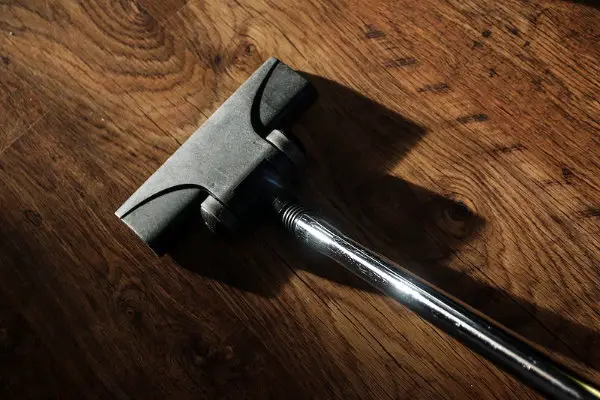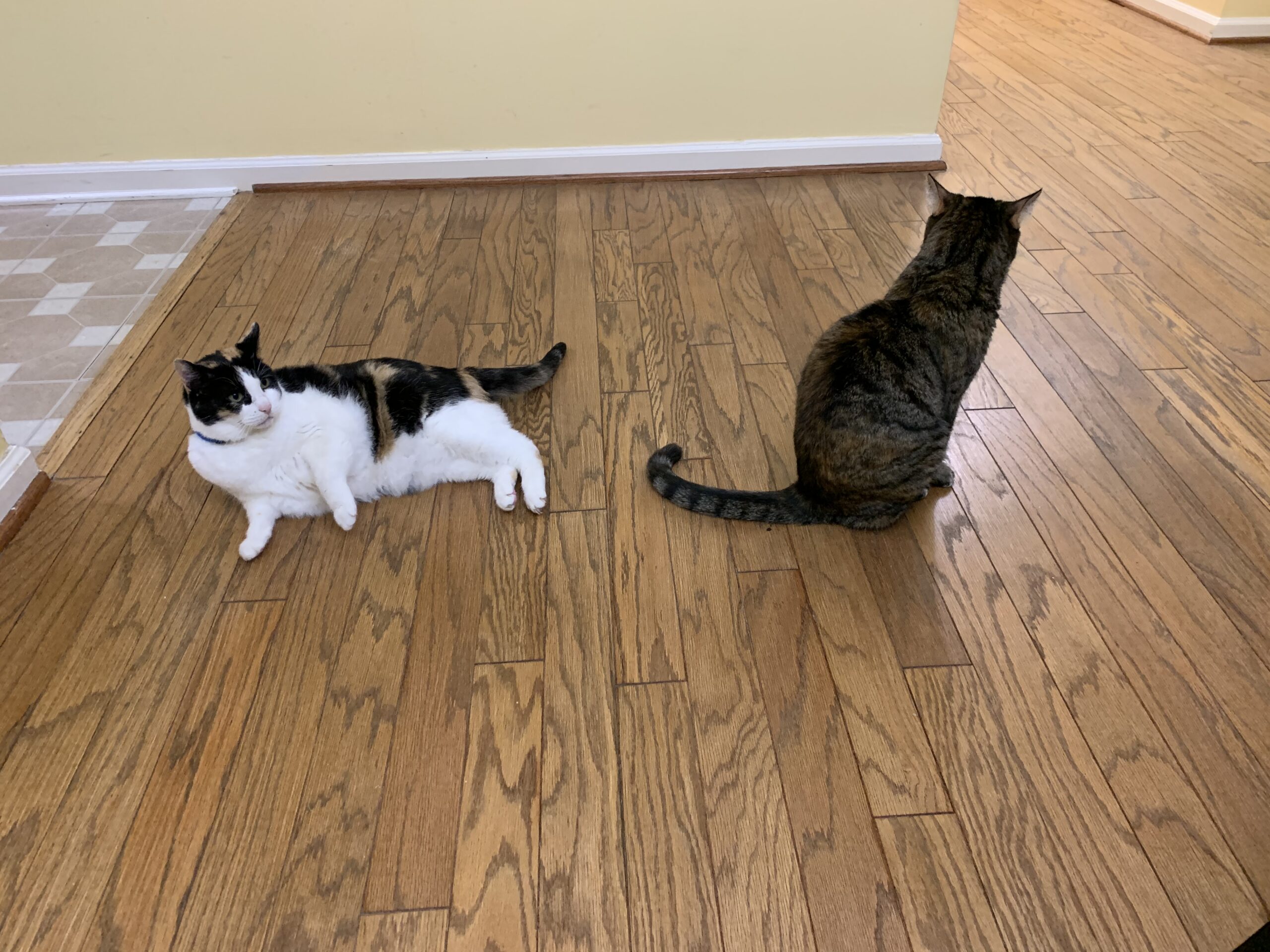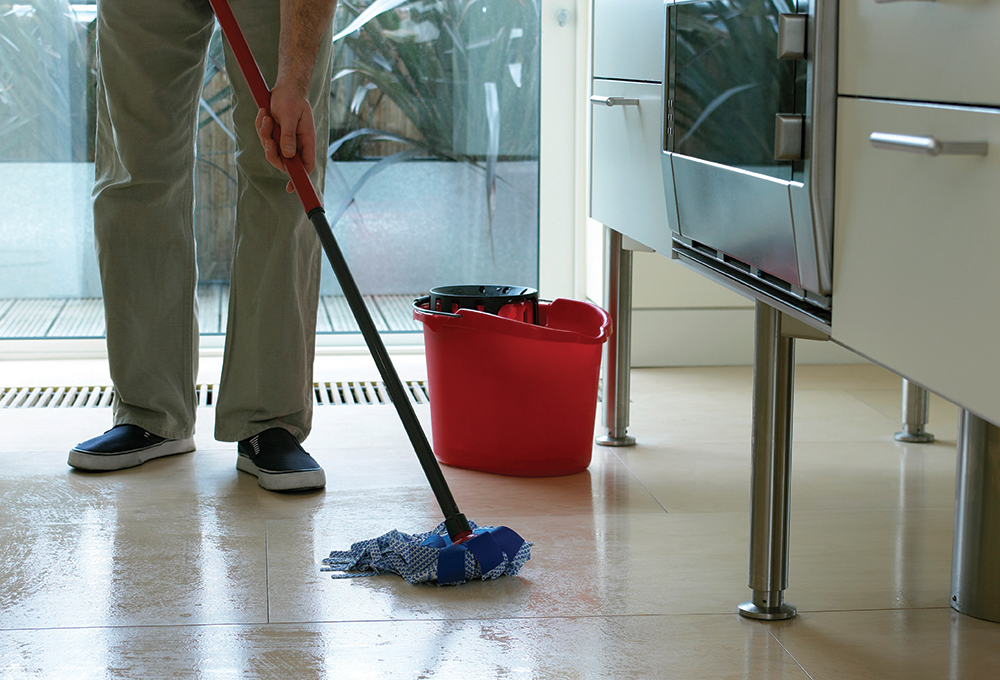If your cat has an accident on your wood flooring, the first instinct is to panic. Cat urine leaves lingering odors and can damage wood if not treated promptly and correctly. Having a plan for quick clean-up is essential. Read on for expert tips on how to get cat urine out of wood flooring.
Cat urine contains proteins that can be difficult to remove from wood floors. The longer the urine stays, the more it seeps into the wood and causes damage. In addition, cat urine has a very strong odor that lingers if not treated properly.
Importance of Timely Cleaning
Addressing the issue of cat urine on your wood floors promptly is crucial to prevent lasting damage. The longer the urine is left untreated, the more it penetrates the wood, causing unsightly stains and an unpleasant, persistent odor.
The acidic nature of cat urine can corrode the wood’s finish and even warp the wood if given enough time. Beyond the aesthetic and olfactory concerns, delayed cleaning can also lead to health issues as the bacteria from the urine multiplies.
Therefore, a swift response is not only key to preserving the integrity and appearance of your wood flooring but also fundamental to maintaining a clean, healthy living space.
Materials Needed
- White paper towels or rags
- Baking soda
- Hydrogen peroxide
- Dish soap (preferably natural and eco-friendly)
- Vacuum cleaner
- Clean mop
Steps to Remove Cat Urine from Wood Flooring
1. Detection of Urine Spots
Identifying the exact location of cat urine can be challenging, especially if it has dried or sunk deep into the wood floor. In some cases, the stain may not be clearly visible, but the strong, distinctive smell of cat urine can help track it down.
For a more precise detection method, you can use a blacklight. In a darkened room, the blacklight will cause any cat urine stains to glow, making them easier to spot. Remember to mark these areas so you can find them easily when it’s time for the cleaning process.
2. Initial Cleanup

The first step in removing cat urine from wood flooring is the initial cleanup. If the urine is still wet, immediately blot the area with white paper towels or clean rags to soak up as much as possible.
Be careful not to rub or smear, as this can actually drive the urine into the wood grain, making it harder to remove. It’s best to blot from the outside to prevent the urine from spreading. Dispose of the soiled paper towels or rags properly.
If the stain is already dry, proceed to the next step, which will involve a more in-depth cleaning process. Remember, the sooner you address the urine, the less damage it will cause to your flooring.
3. Application of Commercial Cleaners
If the odor persists after the initial cleanup, you might need to resort to commercial cleaners specifically designed to break down the enzymes in cat urine.
These products are usually available in pet supply stores or online, and come in both liquid and powder forms. Before using any commercial cleaners, always read the instructions carefully and test a small, inconspicuous area to ensure it doesn’t discolor your flooring.
Apply the cleaner to the stained area and let it sit for the time recommended by the manufacturer. Then, blot it up with clean, white paper towels or rags. For stubborn stains, you may need to repeat the process a few times.
After the application of commercial cleaners, make sure to ventilate the area well to help the floor dry completely and remove any lingering odors.
4. Using home remedies
If you prefer to use more natural cleaning methods, there are a few home remedies that can get the job done. Start by combining one part white distilled vinegar and two parts water in a spray bottle, then spritz it onto the stained area.
Let this sit for about 10 minutes before blotting up as much of the liquid as possible with paper towels or clean rags. Afterward, use a damp cloth to rinse the area with warm water and repeat the process if needed.
For odors that are more difficult to remove, you can sprinkle baking soda onto the stained area and leave it for about 15 minutes before vacuuming it up.
You can also make a paste using five parts baking soda and one part hydrogen peroxide, then apply it to the stained area and leave it for about 30 minutes before wiping it away with a damp cloth. Be sure to rinse the area afterward to remove any residue.
5. Drying and Ventilating the Area
Once you have thoroughly cleaned the stained area, it is vital to dry and ventilate it properly. Start by blotting the moisture with clean, white towels or rags, applying gentle pressure to absorb as much liquid as possible.
Then, to enhance the drying process, use a fan, a heater, or a dehumidifier. Position the device towards the affected area, ensuring that the air circulates evenly and effectively.
Remember to keep the room’s doors and windows open to accelerate the drying process and facilitate the removal of odors. Repeat this process until the wood flooring is entirely dry to the touch.
It’s important to be patient at this stage, as rushing the drying process can lead to mold or mildew growth, which can further exacerbate the odors and potentially damage your flooring.
Preventive Measures
Training your cat
To avoid future accidents, you should train your cat to use the litter box. Always place your cat’s litter box in a quiet and easily accessible location and ensure that it is cleaned regularly.
When accidents do happen, take the time to clean up thoroughly as soon as possible, while also making sure not to scold or punish your pet for its mistake.
Most importantly, if the accidents persist, you should consult with your vet to rule out any underlying medical conditions.
Invest in Stain-resistant Flooring
If your wooden floor is not already treated with a stain-resistant finish, it may be worth considering investing in one.
This type of treatment helps protect wood flooring from moisture and spills while simultaneously making it easier to clean. It will also make it harder for cat urine odors and stains to penetrate the wood surface.
Regular Cleaning
Finally, as with most other surfaces, regular cleaning is essential for maintaining your wooden floor’s hygiene levels. Vacuum the area on a weekly basis and mop it every two weeks or so using a pH-neutral cleaner.
Additionally, you should use a wood-specific cleaner to help preserve the finish and maintain its shine.
Use of protective mats or covers
If your cat tends to make a mess in the same spot, it may be worth considering using protective mats or covers.
This can help protect against spills and also has the added benefit of making it easier to clean up any accidents that do occur. Additionally, they can help reduce odors if used alongside an odor-neutralizer like baking soda or vinegar.
Related Topics:
When to Seek Professional Help
Signs that professional cleaning is needed
If the stains or odors are particularly difficult to remove, it may be time to seek professional help. Signs that you should contact a specialist include:
- Persistent discoloration of the wood
- Strong odors despite regular cleaning and deodorizing
- Discoloration is not lifting after multiple attempts at spot-cleaning
How to Find a Professional
The best way to find a professional is to do your research and find someone with experience in wood floor cleaning. Ask around for recommendations from people you trust, or search online for reviews of local services.
In some cases, it may be necessary to contact a specialist company that specializes in pet urine removal. These services will generally use a combination of special cleaning products and techniques to effectively remove the staining and odors from your wooden floor.
Conclusion
Overall, effective cat urine cleanup requires regular maintenance and spot-cleaning as needed. In some cases, it may be necessary to contact a specialist service to get the job done right. If you follow these tips and regularly mop your wood floor with pH-neutral cleaners, you should be able to keep any staining or odors in check.
Good luck and happy cleaning!





1 thought on “How To Get Cat Urine Out Of Wood Flooring | Expert Tips”